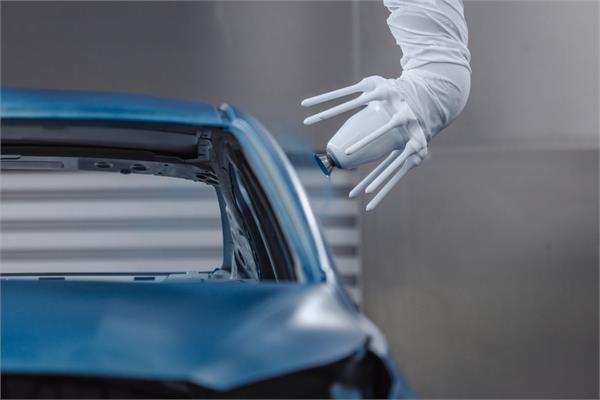
The new atomiser developed by Dürr includes the RFID technology for predictive maintenance.
Presented for the first time during the company’s latest open-house, Dürr has now launched the new generation of atomiser EcoBell4. Performing faster colour changes and reducing paints and solvents consumption and VOC emissions, the atomiser allows to improve the overall equipment effectiveness. EcoBell4 features also the RFID technology for predictive maintenance and can be used for interior and exterior painting.
The company has developed two different versions: the basic one for standard applications and the pro variation for special processes such as 4x1C painting for basecoats and 3x2C solutions for clearcoats, as well as all combinations in between. The latter includes also the new 4-main-needle technology that requires only four seconds for each colour change.
Other new features include a rotation speed acquisition system designed for easier maintenance, a vibration sensor integrated into the robot that detects imbalances in the bell disk and turbine before they cause damage and a protective stocking that reduces soiling, ensuring almost four hours of painting without having to clean the atomiser in between.
In combination with Dürr’s EcoProBooth, EcoBell4 Pro ensures maximum flexibility and universality: the atomiser equally applies narrow spray jets inside the body and wide spray jets on the outer skin, while dirty electrode rings are simply discarded and replaced with clean ones in one of the four service cubicles of the painting booth without stopping the system.
The RFID technology to prevent errors
RFID (radio frequency identification) technology is a wireless data exchange between a transponder and a writing or reading device that allows to improve the coating process and the maintenance directly in the painting booth. The transponders can read and write operating data so that components will store them directly and track wear, providing operators with reliable information about the current conditions and enabling them to make a better use of the service life of components and plan maintenance times in advance.
Typical sources of error, such as the incorrect assignment of bell disks or air shaping rings after a break for cleaning, can also be eliminated: the system detects the incompatible component when it analyses the data and warns the operator through a pop-up window.